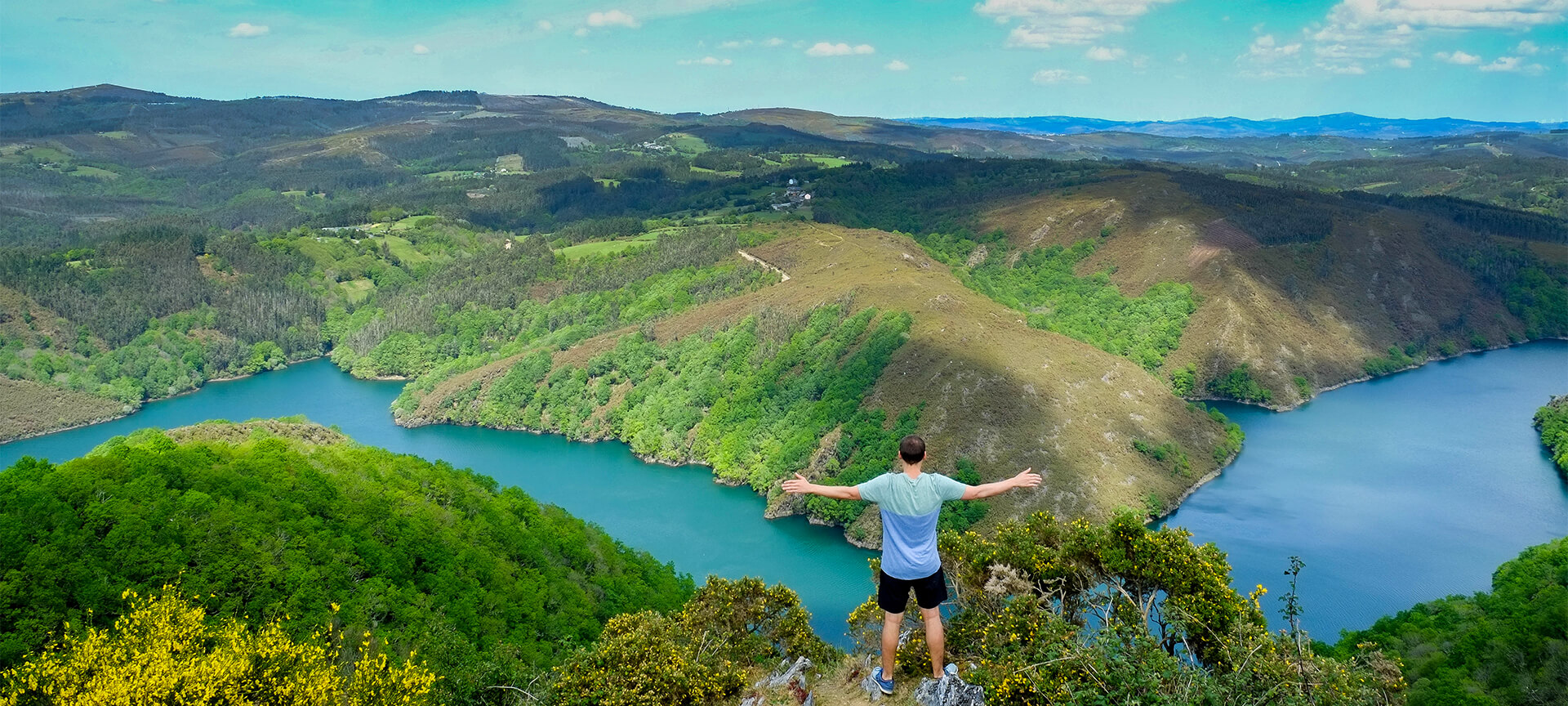
Fragas do Eume Natural Park

In the lush depths of the forest
The Fragas do Río Eume Park is considered one of the great woodland gems of Spain and is the finest example of the survival of native forests along the Galician coastline.
The nature reserve extends through the municipalities of Cabañas, A Capela, As Pontes, Monfero and Pontedeume. It is an area outlined by the course of the Eume River, and the landscape can be described as semi-mountainous. It has a temperate marine climate. This park's greatest value lies in the fact that it has survived since Neolithic times. The oak forests (called fragas) extend over 2,500 ha. of the park, populated mainly by oak trees (Quercus robur). Oak has been of such great importance in the culture of these lands that it was worshipped by ancient peoples for centuries. In addition to oak, other important species include birch, hazel and chestnut trees. Also, although less frequently, Spanish oak, sessile oak, elm and cork oak are found. The park is home to 15 species of amphibians, 14 species of reptiles, 8 species of fish, 103 species of birds and 41 species of mammals. This makes it one of the areas with the greatest biodiversity of fauna in Spain. Characteristic species of the area include the long-tailed salamander and the wildcat.
Debe activar Javascript para poder utilizar este servicio
Fragas do Eume Natural Park
Pontedeume, A Coruña (Galicia)
A Coruña (Galicia):
- Cabanas
- Capela, A
- Monfero
- Pontedeume
- Pontes de García Rodríguez, As
Activa JS
What you need to know
-
Cultural information
The Monastery of Caaveiro, located on a small outcrop formed between the river Eume and the Sesín, is nestled directly inside the park. The monastery, declared a historic and artistic monument, is a gem of medieval architecture that is well worth a visit. The west doorway consists of two archivolts supported by banded columns that surround a tympanum, which is adorned with a sacrificial lamb with prominent horns, pierced by a cross.
-
Environmental information
The importance of the Fragas del Río Eume Natural Park lies in the fact that this forest has changed very little since Neolithic times. Oak is the tree with the greatest presence.
-
Information for visits
There are two specific tourist information points in the area: the Caaveiro Visitor Centre (Lugar de Andarúbel, carretera de Ombre a Caaveiro, km 5, 15600 Pontedeume); and the Monfero Visitor Centre (Carretera DP-5003 s/n, 15619 Monfero).
Travel plans for inspiring you


